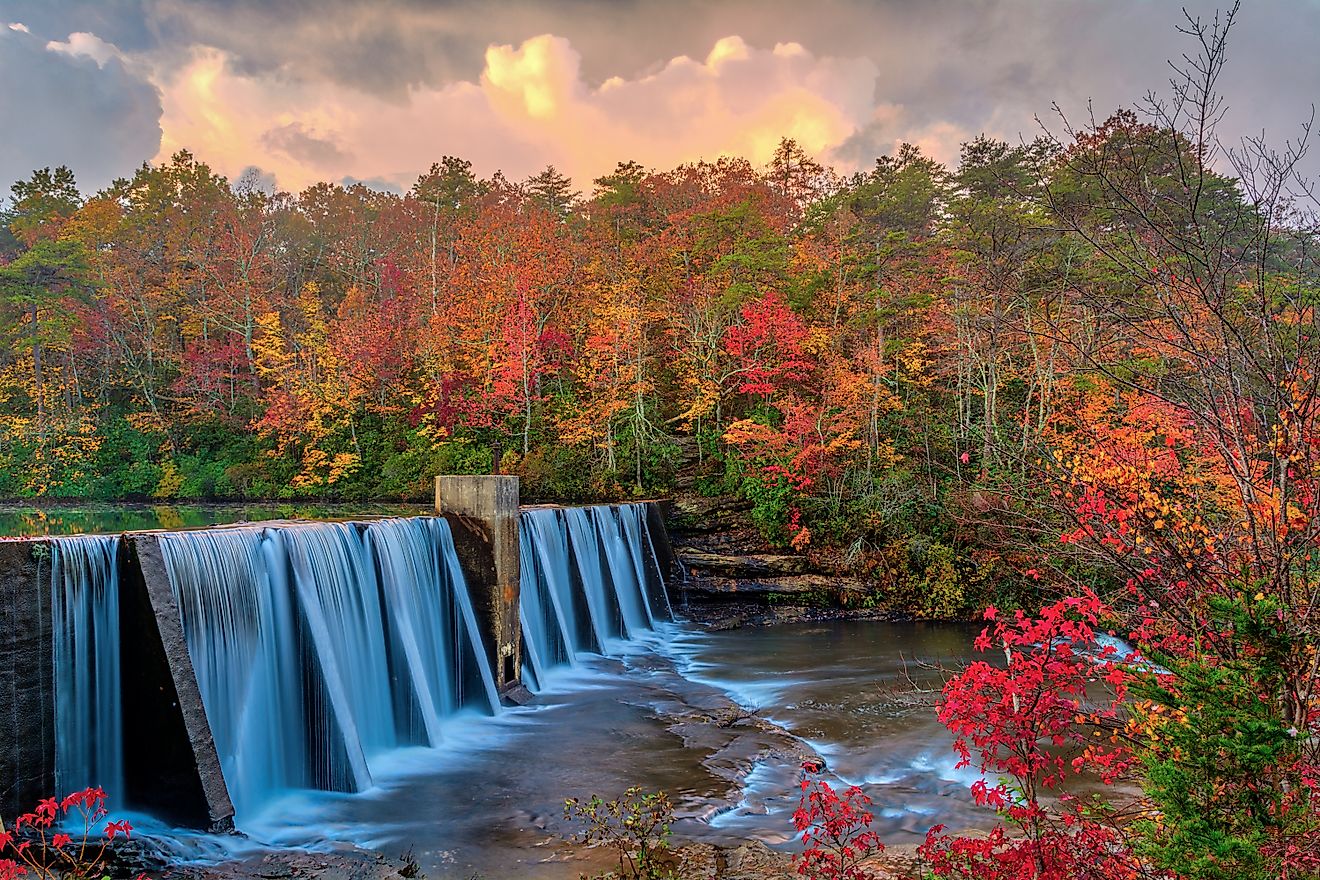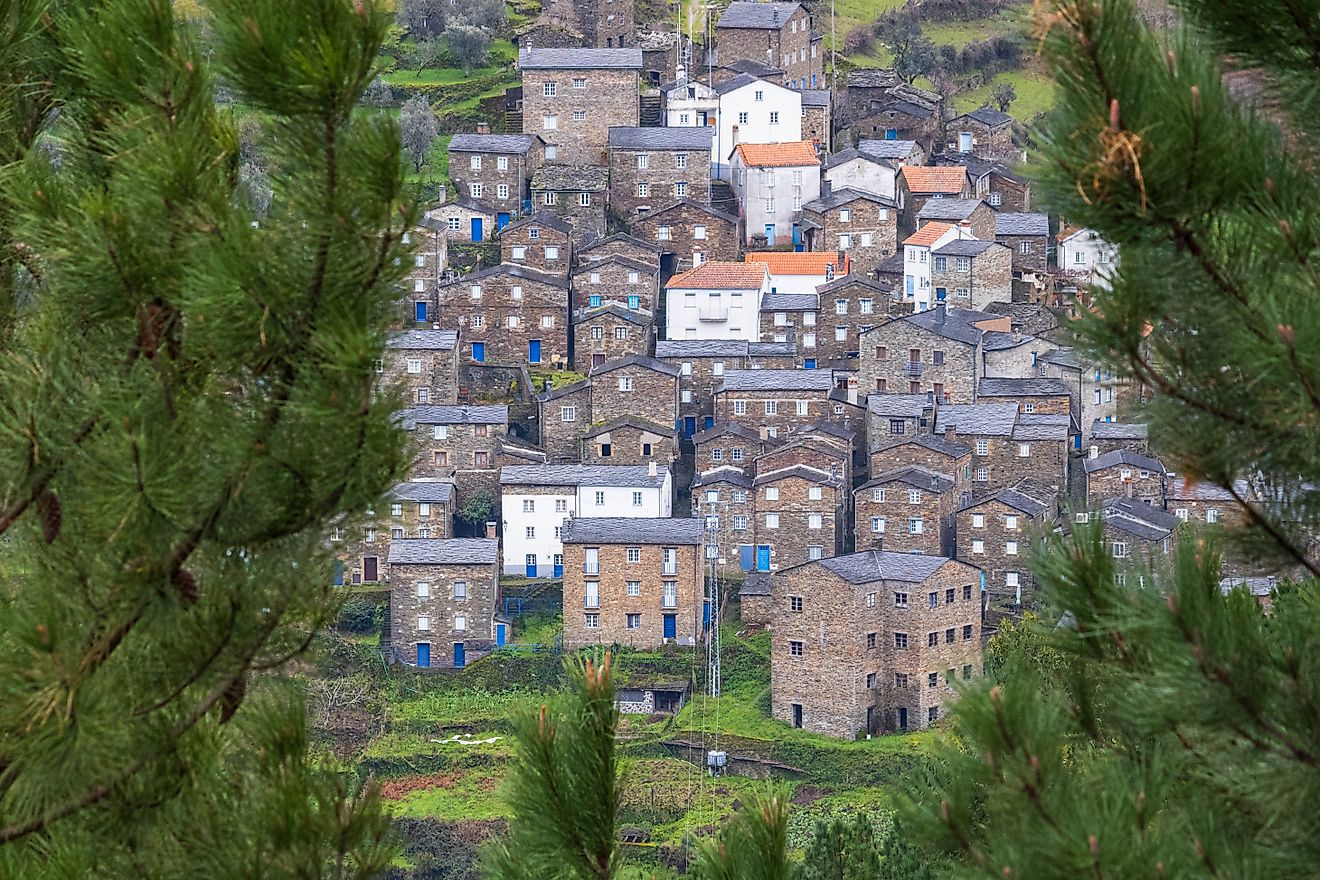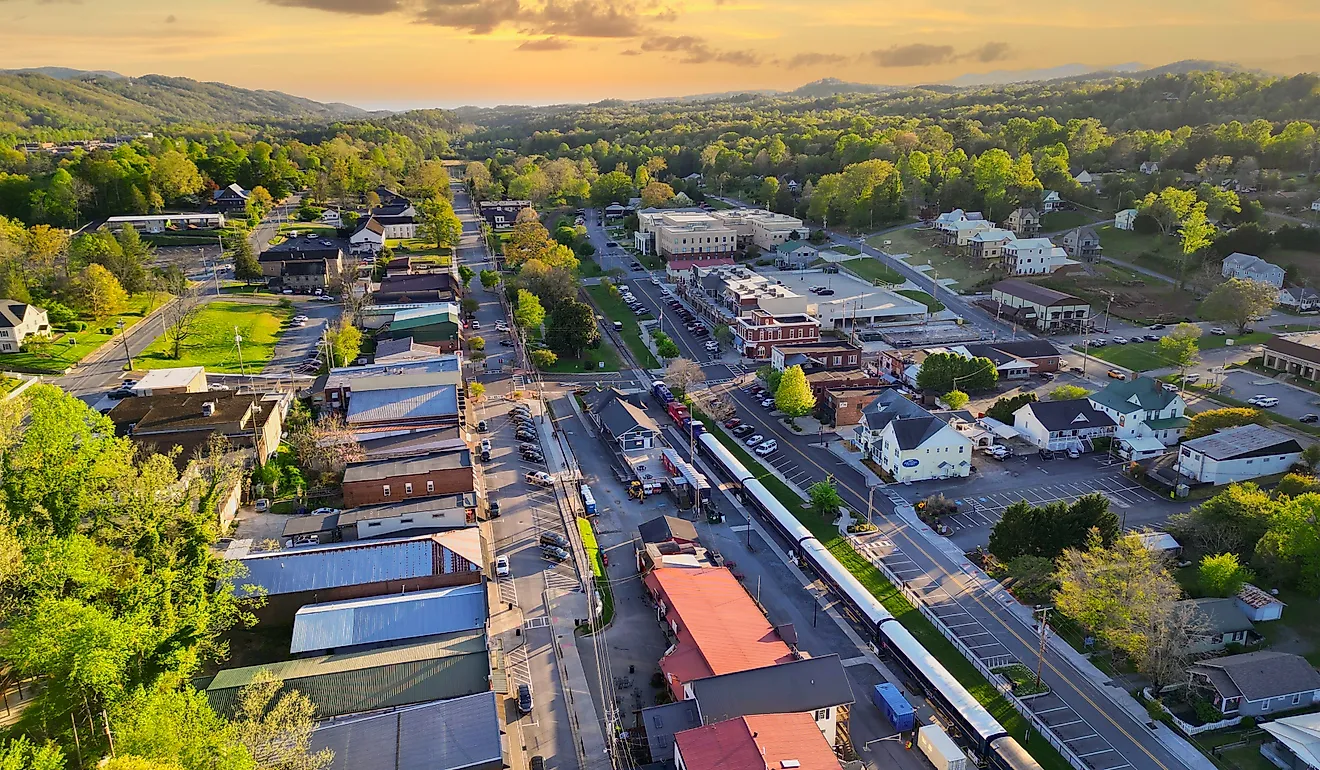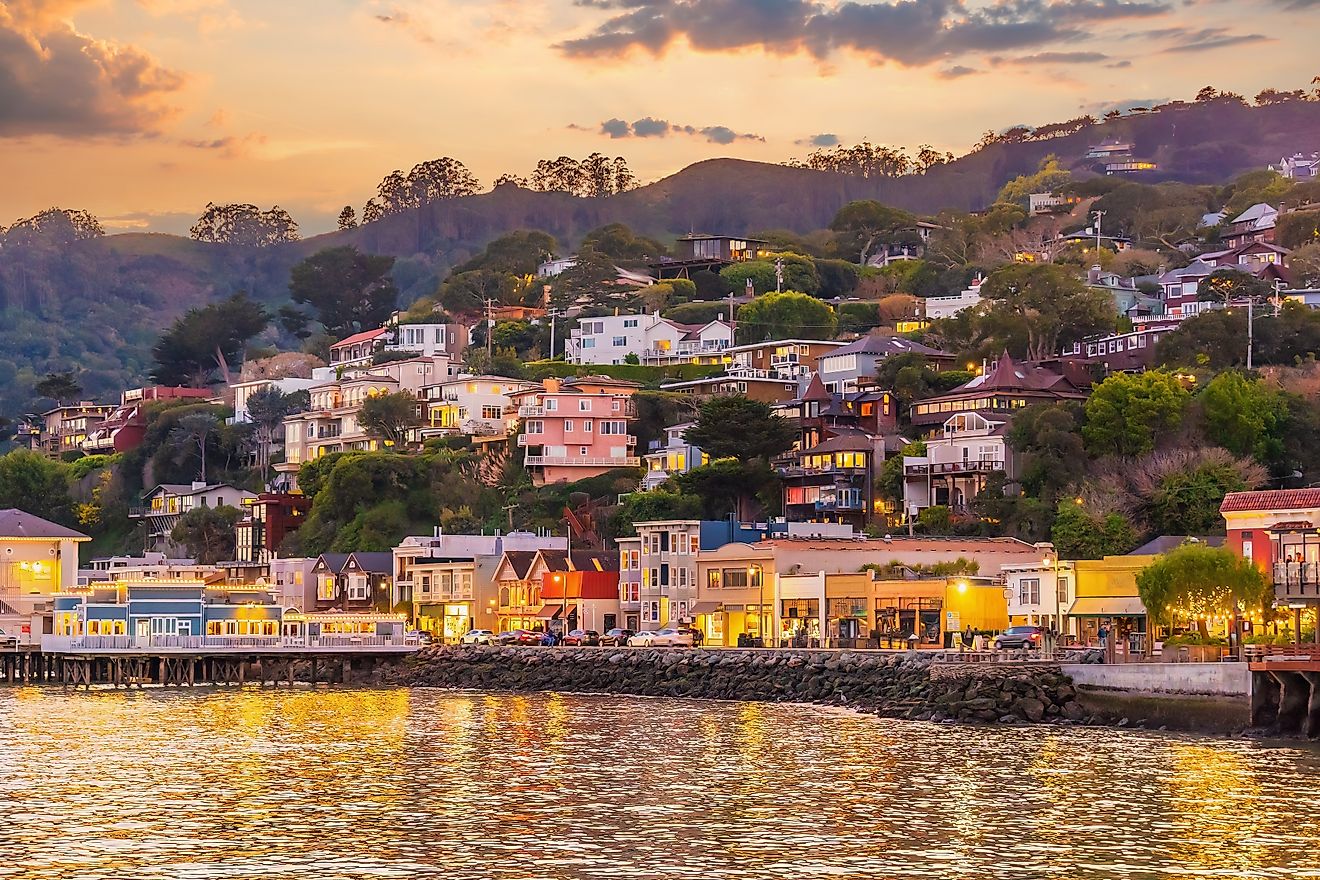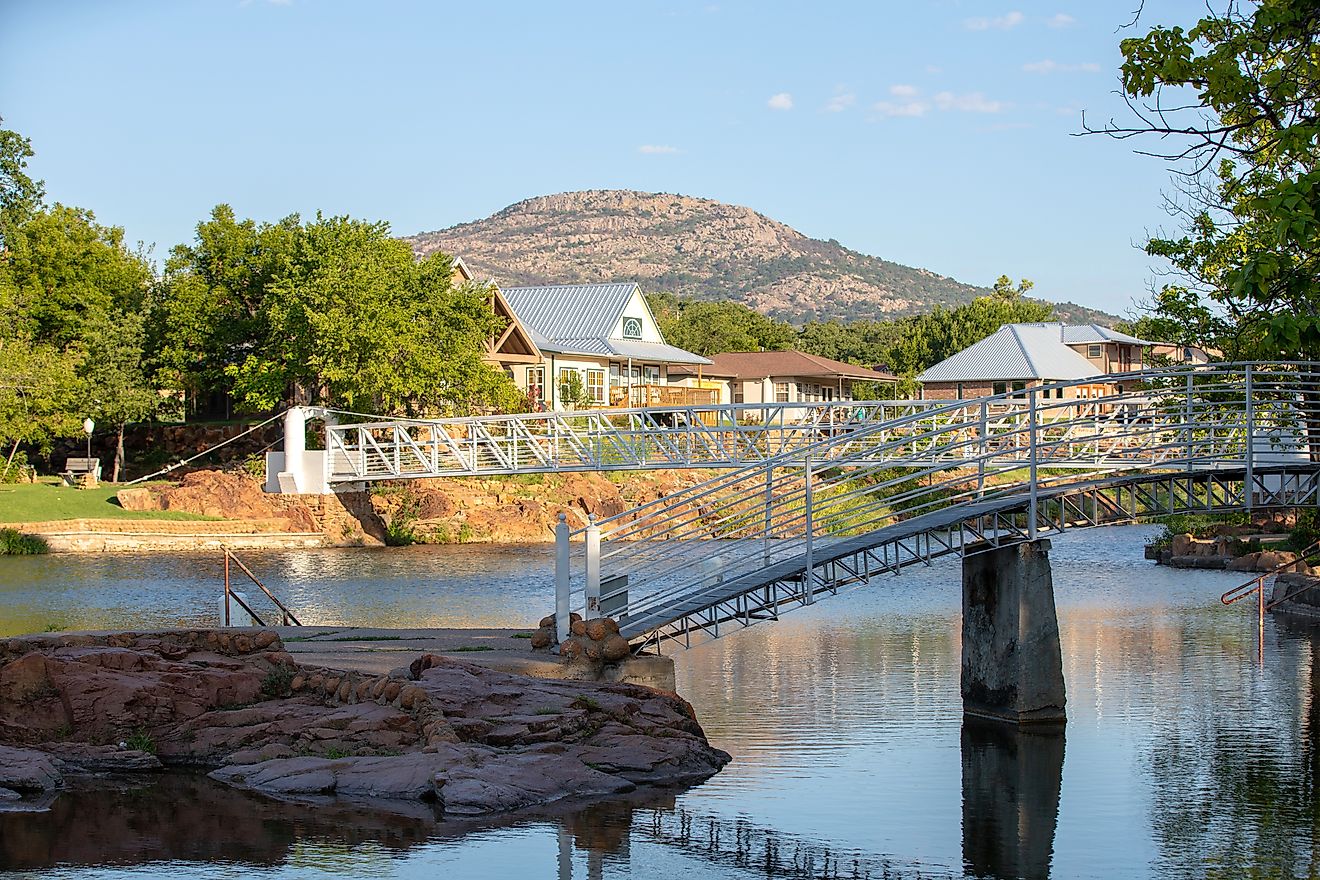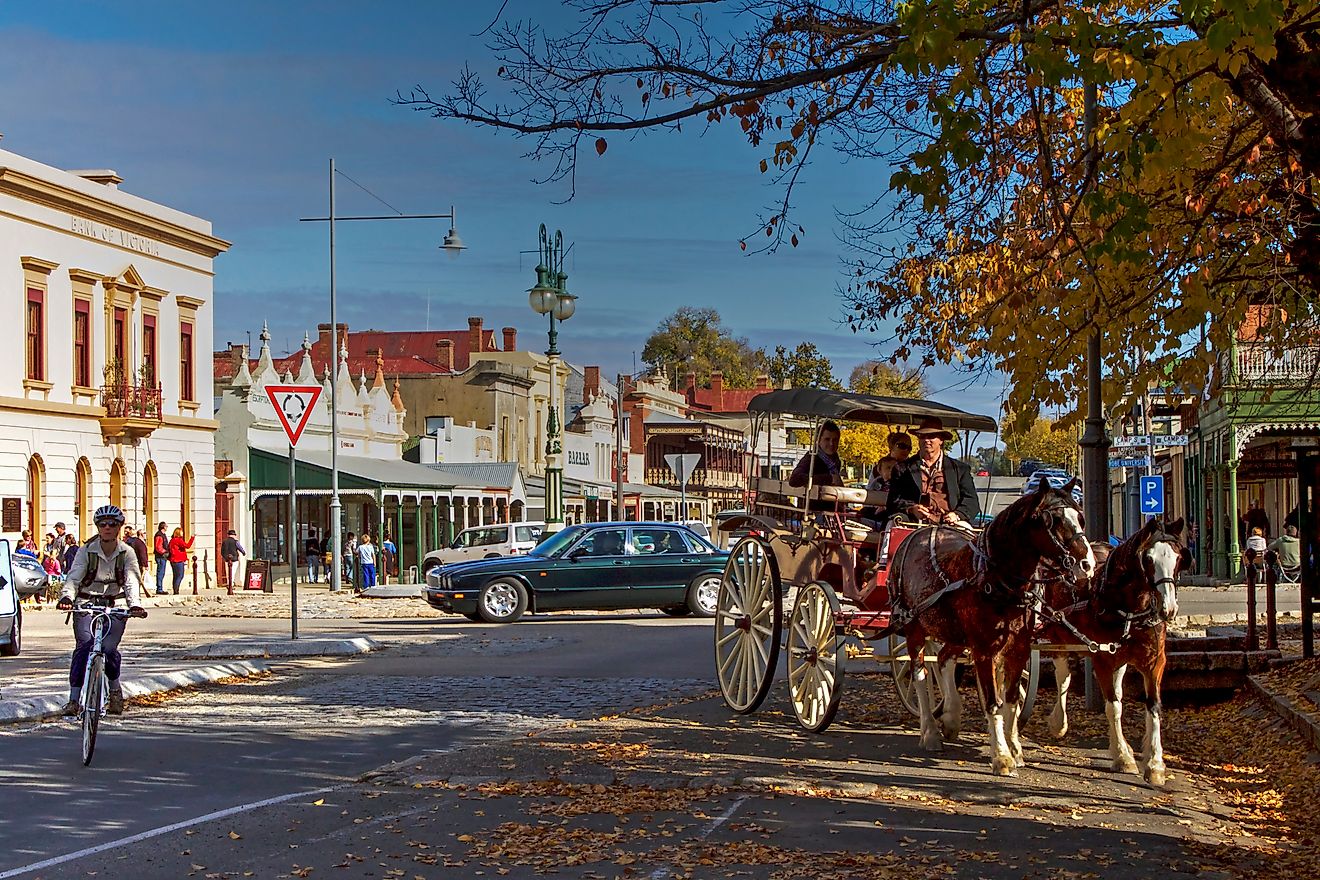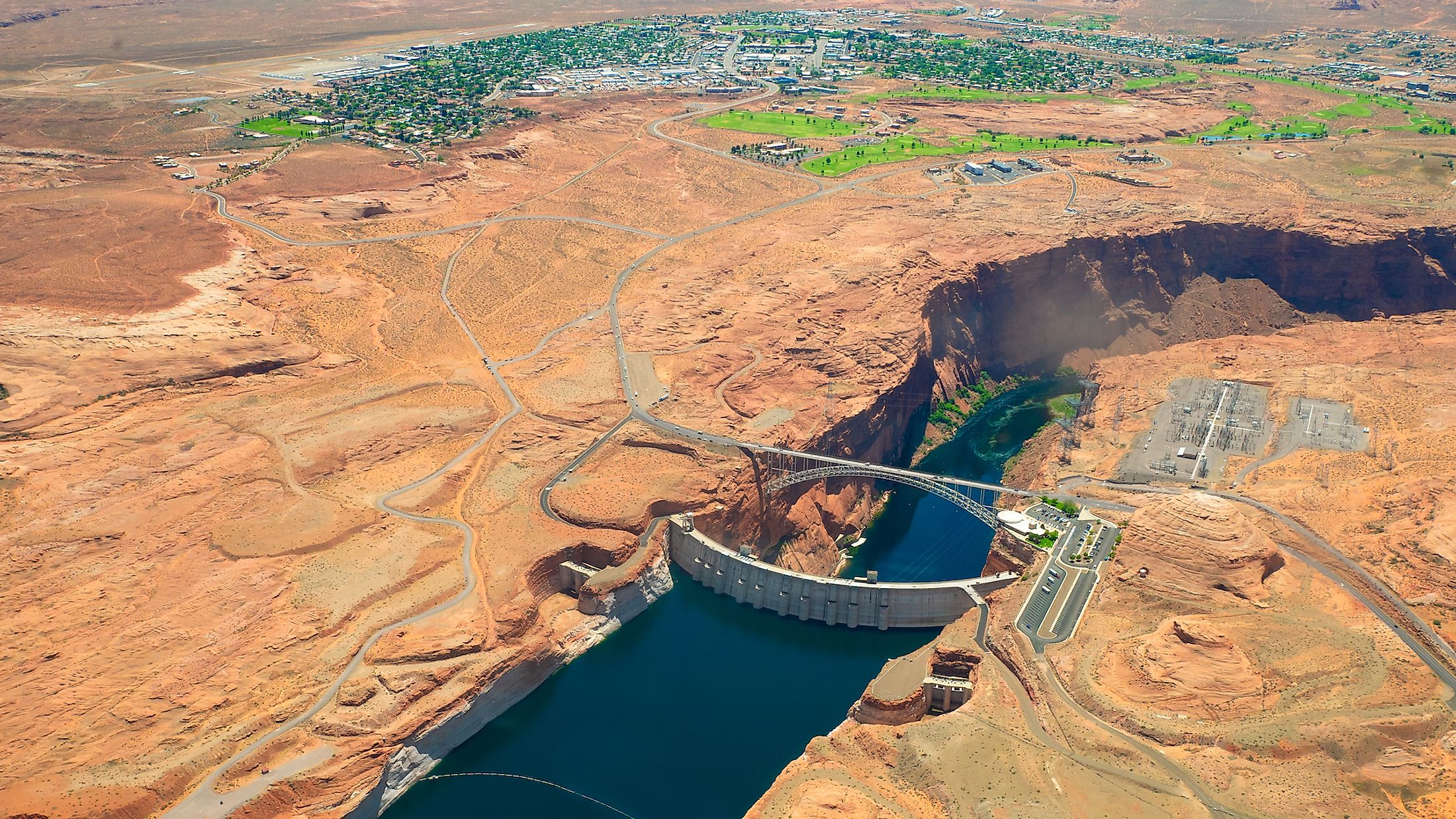
America's 9 Most Impressive Dams
Dams are an oft-forgotten stalwart of our economy. They provide hydroelectric generation, prevent floods, and give people in dryer areas access to clean water. Also worth considering is the fact that many dams are architectural marvels and may sometimes be worth visiting just to witness their immense presence. With this in mind, what are the most physically impressive dams in the United States?
Hoover Dam
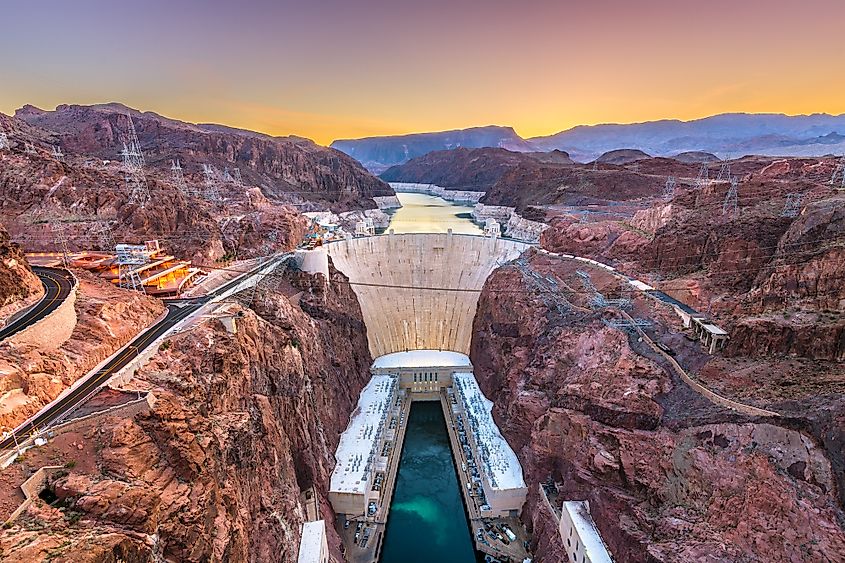
The Hoover Dam stretches across both Nevada and Arizona. Completed in 1936, the Hoover Dam stands at 221 meters in height and 379 meters in length. The Hoover Dam created Lake Mead, a reservoir of 28,537,000 acre-feet. The annual power generation sits at around 3.3 TWh. The Hoover Dam is an arch-gravity dam. Arch-gravity dams combine the functions and appearances of an arch dam and a gravity dam. This type of dam moves most of its water against the rock walls of canyons in a curved formation. This method is convenient because it demands less construction material than the arch and gravity dams. The Dam's construction cost 112 lives and was named after then-controversial U.S president Herbert Hoover. Hoover was partly blamed for the Great Depression, so naming the dam after him during the depression was considered insulting at the time. Interior Secretary Harold L. Ickes campaigned to get the name changed to Boulder Dam, but the name failed to become commonplace. The Hoover Dam name was confirmed in 1947 by Congress.
Dworshak Dam
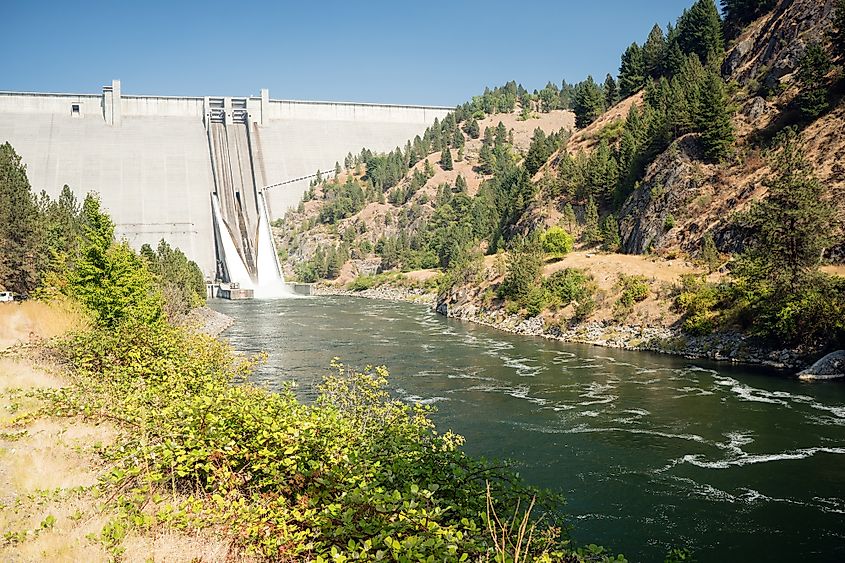
Located in Idaho, the Dworshak Dam is a concrete gravity dam completed in 1973. The dam sits on the North Fork Clearwater River and stands 219 meters tall. The Dworshak Dam is 1002 meters in length. The dam and its accompanying power station generate approximately 1.693 billion kilowatts of energy per hour. The Dworshak Reservoir sits at a capacity of 2,016,000 acre-feet.
Glen Canyon Dam
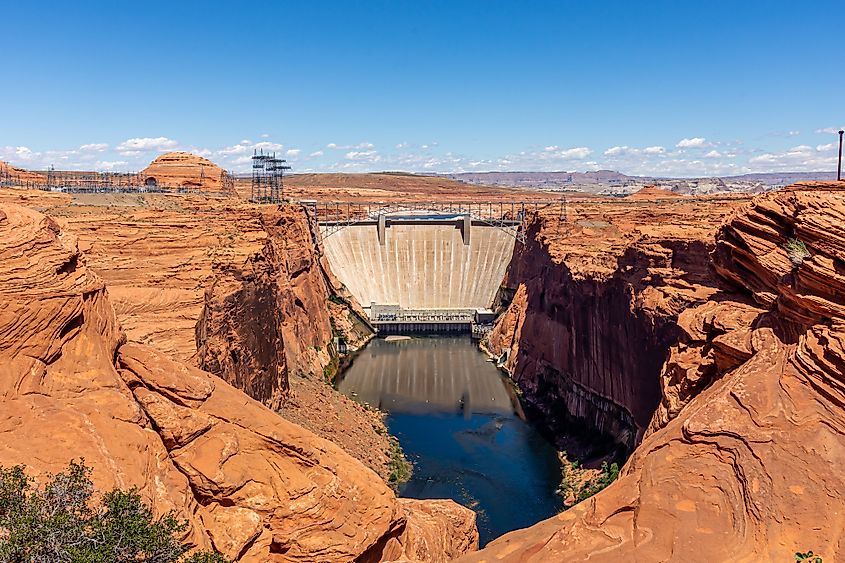
The Glen Canyon Dam is a concrete gravity Dam on the Colorado River in Arizona. The dam sits at 220 meters in height and 480 meters in length. The Glen Canyon Dam was completed in 1966. The reservoir created by this dam is Lake Powell, at 25 million acre-feet. The dam is named after the nearby Glen Canyon, which is now submerged by the reservoir. The hydroelectric generation of the dam creates around 4,717 GWh annually. The dam became a central talking point of many local environmentalist activists, who call into question the dam's significant negative impact on the local environment and ecosystem.
Oroville Dam
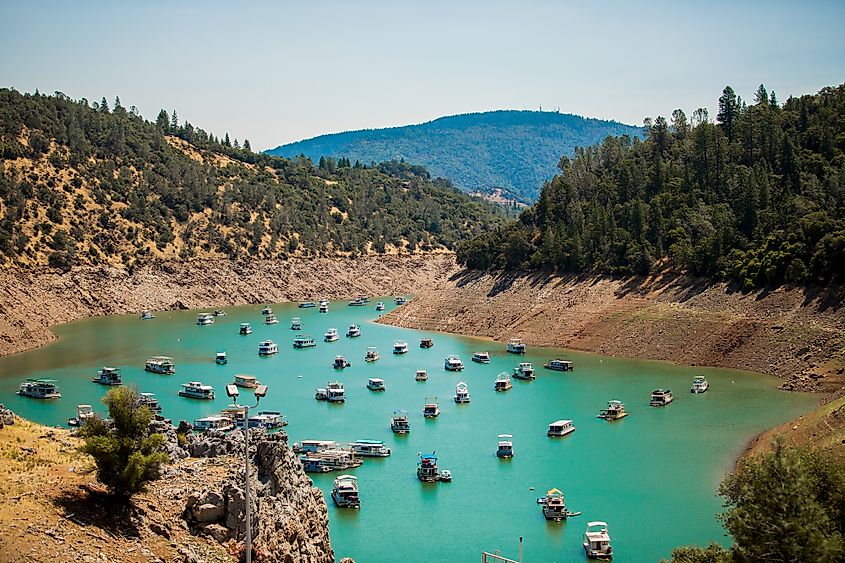
Situated in northern California, the Oroville Dam stands 235 meters tall and 2109 meters long. The Oroville Dam is an embankment dam whose construction was completed in 1968 and has since been faced with increased scrutiny due to its reliance on earthen materials over concrete to move water. The dam creates the Lake Oroville reservoir, a reservoir with a total capacity of 353,537,577 acre-feet. The Oroville Dam generates 1600 GWh of electricity per year. The dam faced issues and accidents in 2009, 2013, 2015, and 2017.
New Bullards Bar Dam
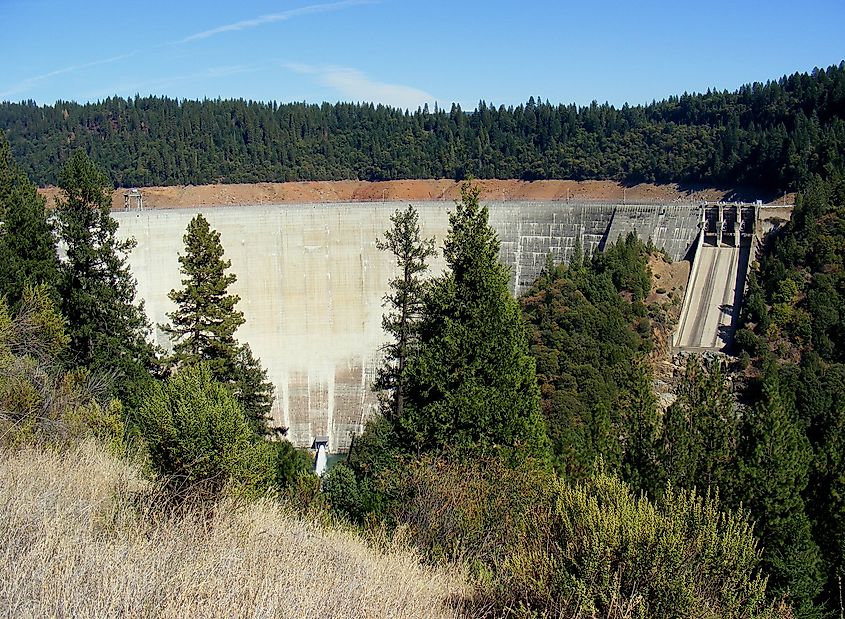
The New Bullards Bar Dam is an arch dam opened in 1969. The dam is located in the northern California county of Yuba and stands at 197 meters in height and 789 meters in length. The New Bullards Bar Reservoir is the artificial lake created by the dam, with a capacity of 969,000 acre-feet. The hydroelectric generation of the dam sits at around 1,114 GWh annually. Being an arch dam, it is curved upstream, being optimal for gorges and canyons. They are also more cost-effective and require far less material than other dams to create.
New Melones Dam
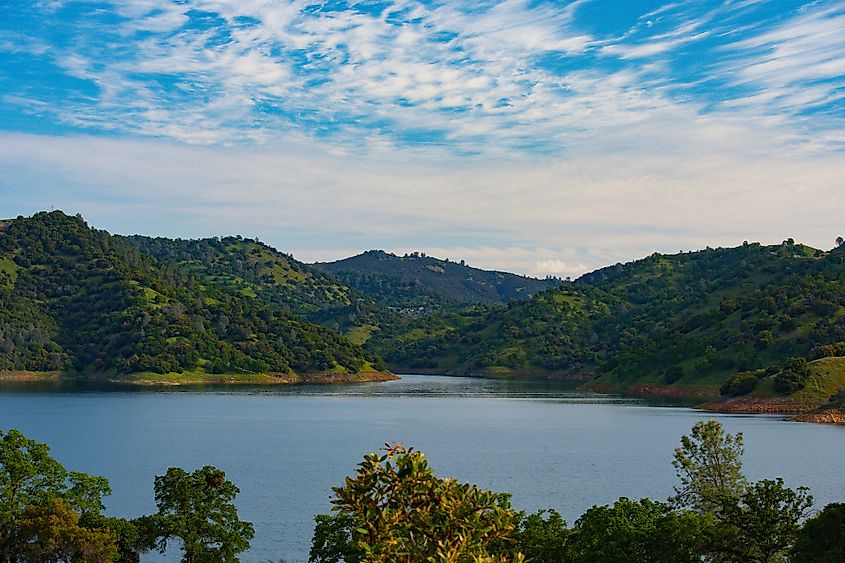
The New Melones Dam is an embankment dam on the Stanislaus River that opened in 1979. The New Melones Dam is located in central California and is 191 meters tall. The dam is 480 meters in length. The dam forms New Melones Lake in the Sierra Nevada foothills. The lake is 2,400,000 acre-feet, and the hydroelectric generation of the dam is around 417,880,000 kWh annually. The New Melones Dam is central to an environmentalist movement that started in the 1970s. Protesters cited the flooding of the Stanislaus River and the disruption of fish living in the area as major concerns. The dam's inability to contain massive flooding in 1982 caused the water limit to be lifted and the lake to be filled. Dam projects of a similar scale have been scarce in the United States ever since.
Mossyrock Dam
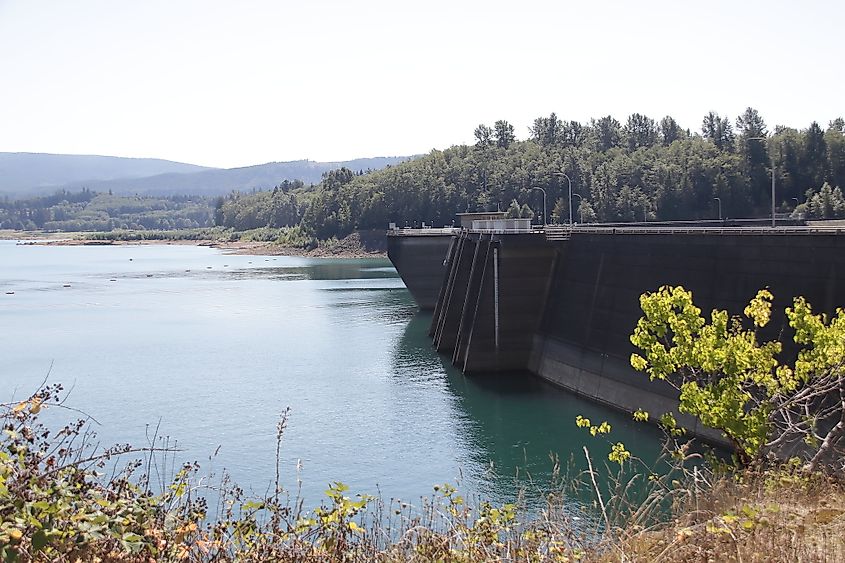
Mossyrock Dam is an arch-gravity dam situated on the Cowlitz River in Washington, USA. The dam opened in1968 and currently supplies nearly 40 percent of the nearby city of Tacoma's energy. The Mossyrock Dam stands at 185 meters tall and 502 meters long. The dam creates the Riff Lake reservoir, with a capacity of 1,685,000 acre-feet.
Shasta Dam
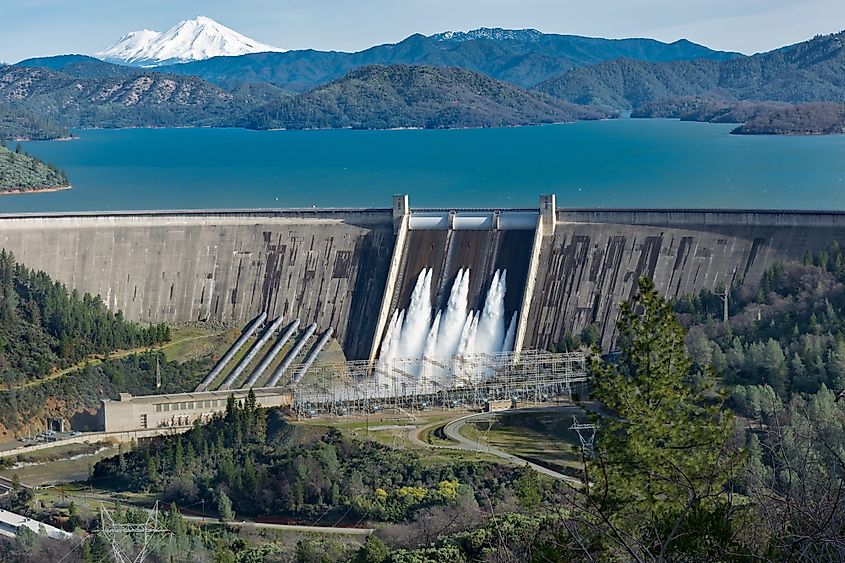
The Shasta Dam is an arch-gravity dam on the Sacramento River. The dam was opened in 1945 and stands 183 meters tall and 1,050 meters long. The Shasta Dam creates the Shasta Lake Reservoir at a capacity of 4,552,000 acre-feet. The annual hydroelectric generation currently sits at 1,935 GWh. Frank Crowe, the superintendent of the Hoover Dam project, also oversaw the Shasta Dam.
New Don Pedro Dam
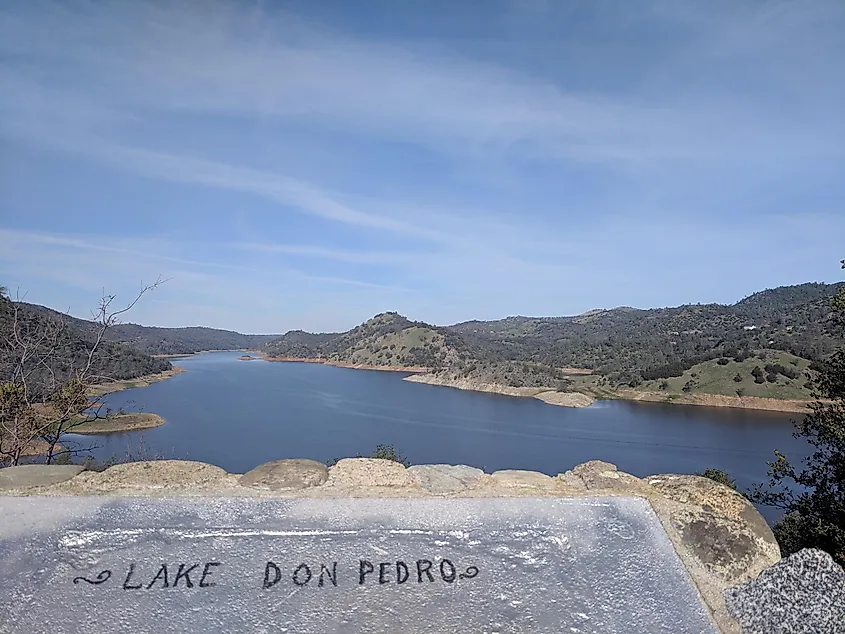
The New Don Pedro Dam is an embankment dam in central California. The dam was opened in 1971 and is 178 meters tall and 580 meters long. The reservoir created is Lake Don Pedro, at a capacity of 2,030,000 acre-feet. The hydroelectric generation of the New Don Pedro Dam is approximately 552,381,000 KWh.
